Of Limestone, Quarrymen and Apple Laxative
Today’s news is all thoroughly depressing. The BBC is spouting on about the war in the Ukraine. There’s ongoing chaos on Britain’s rail network. Global warming won’t bloody go away, and -more importantly- why the fuck is Gareth Southgate still picking the human bollard Harry Maguire for England’s centre back? Good God, the misery never ends. To cap it all I was locked in a hotel in Frankfurt recently for a series of dull business meetings, sustained by a diet of luke-warm frisbee-sized schnitzel and soggy potatoes. Yum.

Small wonder then if my mind drifts back to a time when the world was gentler and kinder, and life moved more slowly, unspoiled by the daily horrors of the internet. Back to a time of golden wheat fields framed by hawthorn hedgerows, of windy cliff tops with endless azure ocean views, country villages and welcoming pubs. Yes, I’m talking last July when I spent 2 weeks hiking through the glorious English countryside with not a care in the world other than where the next Cornish pastie was coming from, and could I really smell that bad after 7 hours of walking? (A. Yes.)
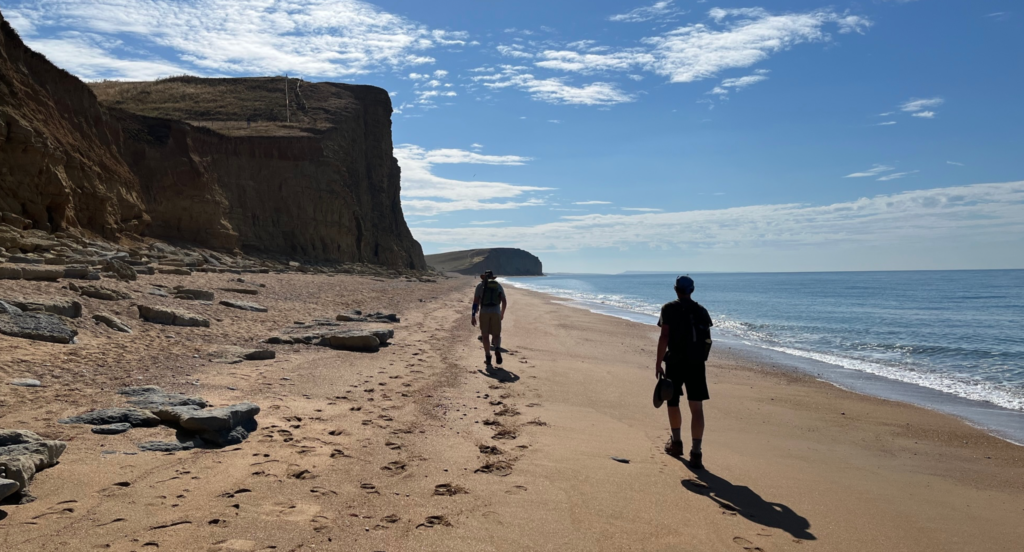
Tell Me More, Mr Mooby
If that makes you think “Wow. Sounds bloody amazing, where do I sign up?” have a chat to the boss tomorrow morning – threaten to circulate that photo from the Christmas party if you have to- and book some time off next July. Then, make plans to hit the Southwest Coast Path in Cornwall or Dorset for a week. Drop me a line if you need any help with the planning and I’ll put you in touch with some folk I know.
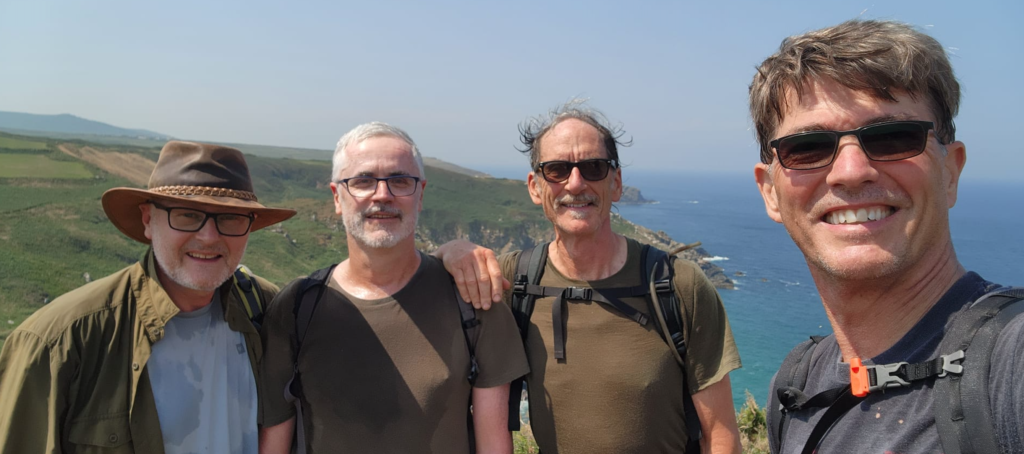
The full coastal path takes about 50 days, starting in Minehead, Somerset and wending its merry way around Britain’s pointy southwest peninsula. It bounces along the granite cliffs of Cornwall, through Devon to the layer cake Jurassic rocks of Dorset where it finally ends near Poole. It’s an amazing stretch of coastline, drenched in enough history to suit every sordid taste: smugglers, mining disasters, salty sea dogs, damsels and Spanish armadas. At 1,000 km long it’s one of Europe’s longest trails, on a par with the Camino De Santiago in Spain but without the itinerant gangs of slightly sinister chanting monks. If you walk its full length, you climb a grand total of nearly 115,000ft along the way, 4 times the height of Mt. Everest. The trail uses Britain’s ancient network of public foot and bridle paths.

I tackled 275km of the path in 2 big chunks last summer in the middle of a heat wave, accompanied by 3 geologist pals. To borrow a line from an earlier post, if windswept mooby men posing on Atlantic cliff tops is your thing -their bulging T-shirts moist with sweat from long hours carrying tiny packs heavy with lunch- then this is the walk for you. Our days were fueled by a diet of lardy pies, calorific fish and chips and gluttonous puddings, washed down by pints of real ale; more than enough calories to ruin any hope of walking-induced weight loss.
Locals. What Do They Know?
Fresh off the plane from Vancouver we drove to Penzance, caught a taxi to St Ives and checked in to the Painter’s Cottage BnB where we were greeted by an intimidating landlady with a raspy voice and her slightly downtrodden but talkative husband who was clearly eager to chat to someone other than his wife. The next morning, after a night on the suds in St Ives, we were so keen to get started that we ignored the ominous croaky warnings of our hostess:
You have 7 hours of pain ahead of you today and you’ll all run out of water. She cackled, handing out white china plates heavy with bacon and eggs.

Scarfing down our food, we dismissed her counsel -after all what did she know, locals eh? – and off we set on the first leg of the trek in the middle of a rare shower of rain. Seven painful hours later, with empty water bottles and a couple of bouldery miles still to go, it began to dawn on us that a) she was right, and b) we’d perhaps underestimated the severity of the hike as dehydration set in to compound the pain from sore feet and creaky middle-aged knees. The rigours of the first day nearly brought a premature end to my hike as my left knee seized up the next day forcing me to rest up for 48 hours.
Bombs and Blood
There were many notable moments along the way (my daily travelogue is linked here), from the old tin mines near Pendeen to the blown-up tanks scattered around the massive artillery range near Lulworth where the path is marked by yellow poles and signs that read “Stay between the poles or you’ll die.” Cheery stuff. We passed through West Bay in Dorset, the setting for the nasty-but-compelling TV crime series, Broadchurch, where I found a tiny ammonite fossil. And we followed a sinister trail of fresh blood up the cliffs at Lulworth Cove without ever finding the unwilling donor.
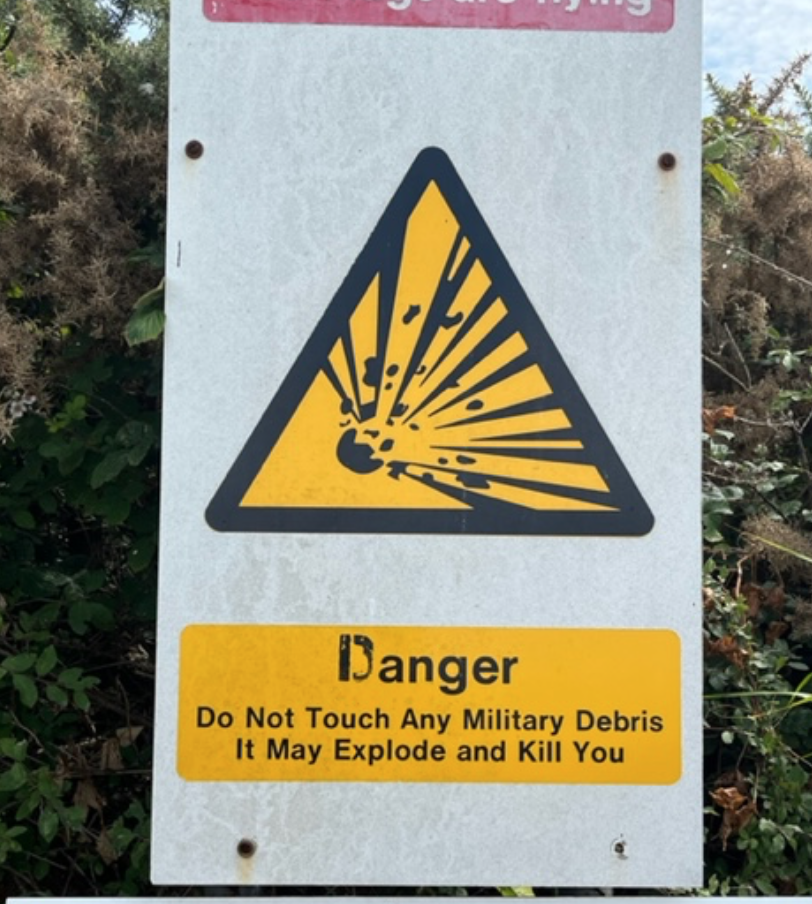
Let’s Get to The Beer
But without a doubt, the historical highlight for me was our visit to the fascinating underground limestone quarry near the wonderfully named village of Beer in Devon. It’s a cold, musty labyrinth of tunnels that was mined for over two thousand years, and supplied carveable limestone for the window arches, fireplaces and statues that adorn Britain’s cathedrals -Westminster Abbey and Exeter Cathedral are 2 examples- and many of its grandest state buildings.
The Romans got there first 2-thousand years ago, bringing along lots of slaves to mine the rock. After them, the Saxons had a go followed by our Norman French cousins who chipped away for a few hundred years. Then along came the English* who dug into the hillside deeper still. You can tell which era you’re walking through in the mine by the shape of the supporting arches. The Romans left large, curved arches to support the roof, whilst the Normans chiselled out rectangular columns.
*Whatever English means, given that many of us English folk have Norman or Viking ancestry.
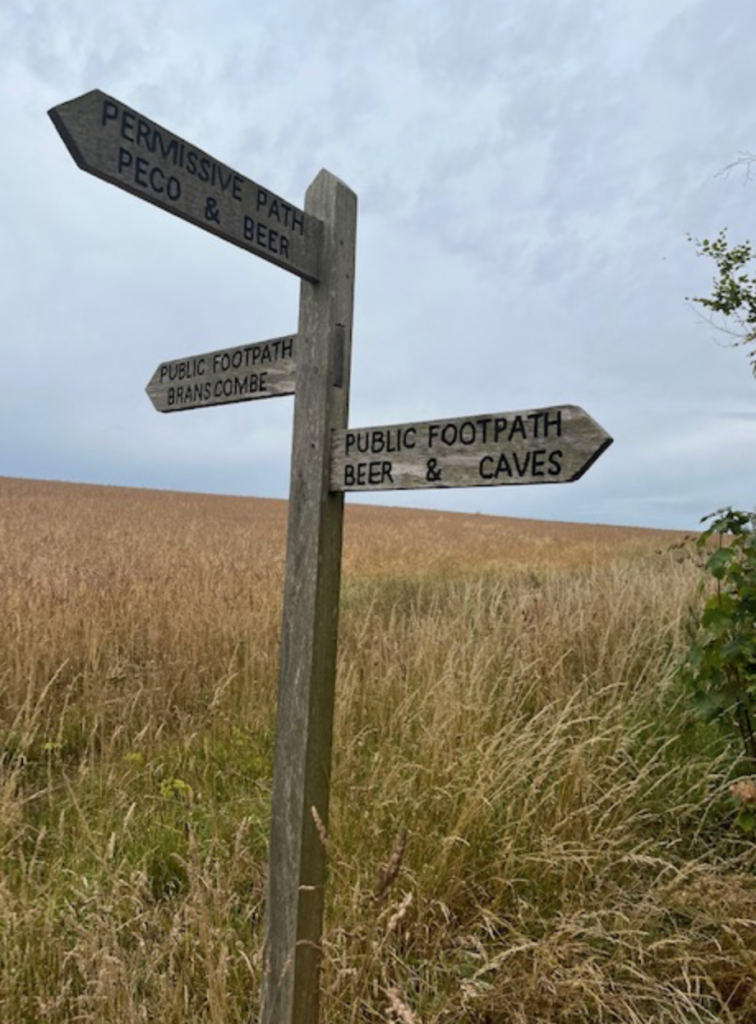
Hundreds of years later during World War 2, the workings were used to hide submarine torpedoes from Nazi air raids and to grow vast quantities of mushrooms for the hungry wartime population. The tunnels also host a healthy population of protected bats that hibernate there during the winter including Bechsteins Bat (hopefully there’s more than one) and Horseshoe bats.
Whatever You Do, Do NOT Take The Bus
Getting there was not without its risks. We took a bus from Exmouth to Beer; a nerve-shredding journey of narrow country lanes and near-misses. Our driver tackled the roads -barely wide enough for the bus let alone on coming traffic- with aplomb, screaming along at what felt like 130 miles an hour while we hung on to our seats for dear life. Trees and bushes scraped noisily down both sides of the bus and when we met an on coming car (poor bastards), she’d slow down for a few seconds but then drove relentlessly on, forcing the flustered car driver to back down the road at the same speed until they reached a passing place. After forty-five long minutes, suffering from whiplash and PTSD, the four of us jumped shakily off the bus at the visitor centre happy to be alive.

There hasn’t been a great deal of thought or budget thrown at the visitor centre. It’s an unattractive overgrown wooden shed with a barbeque area at one end and an ice cream freezer just inside the door next to the cheap souvenirs. But don’t let that fool you. The quarry more than makes up for the tacky welcome and is worth the 10 quid entry fee, so push on through. We paid our money and waited for the 1pm guided tour; sensibly the owners don’t allow the great unwashed to wander around underground on their own. Donning cheap yellow hard hats, we followed our guide through the gated entrance into the dank workings and listened intently as she began the tour.
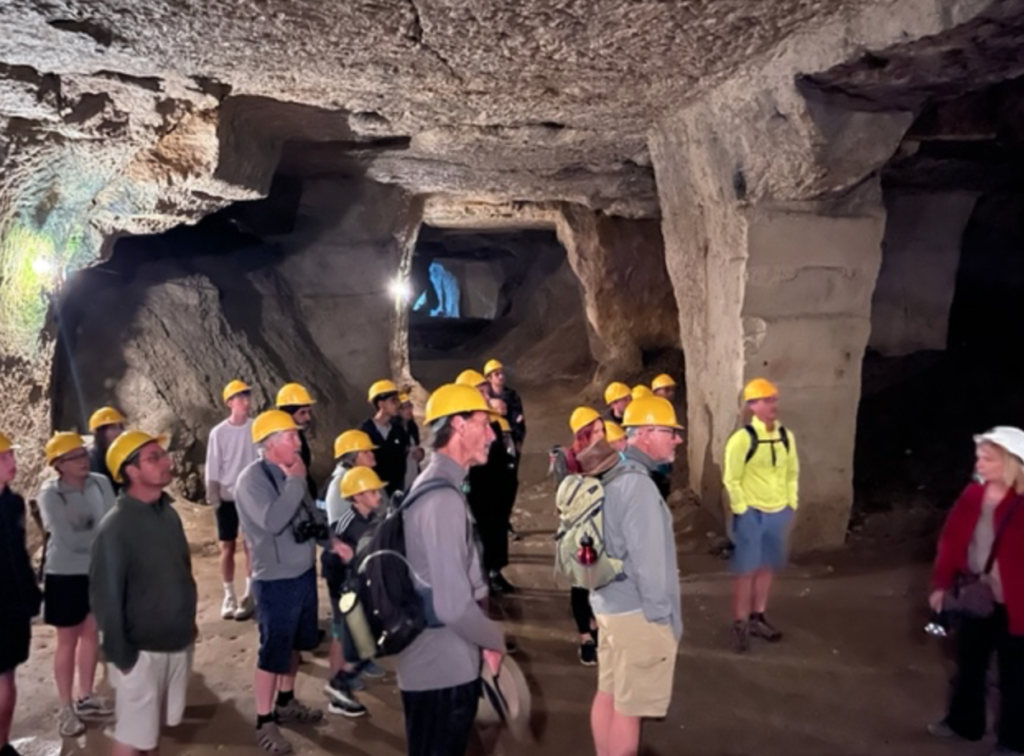
It Was Nasty Down There.
The quarry supplied 4 tonne blocks of Beer Freestone limestone to masons in London or wherever there were cathedrals and large buildings going up. It’s a unique stone that was carved rather than be used for structural stonework. The quarry website has this to say:
Freshly quarried Beer Stone is saturated with water and with very few fossils was much prized by the masons as it is ideally suited to fine detail carving. … On exposure to the air it dries creamy white and becomes up to 5 times harder, remaining durable for centuries provided it is laid in the same plane in which it was formed.
The quarrymen were a special breed, tough as old boots. Each man had to mine one 4-ton block per day by hand, in almost total darkness immersed in the cacophonous noise of dozens of sledgehammers and chisels striking rock faces. Most of the men were stone deaf by the end of their working life. In places the alcoves and mining faces are caked in soot from the tallow candles the miners used to light up their little piece of underground hell, and I can only imagine what the smell must’ve been like when it was working at full capacity: sweat, tallow smoke, horse shit, human waste – all mixed together in a nasty stale fug.
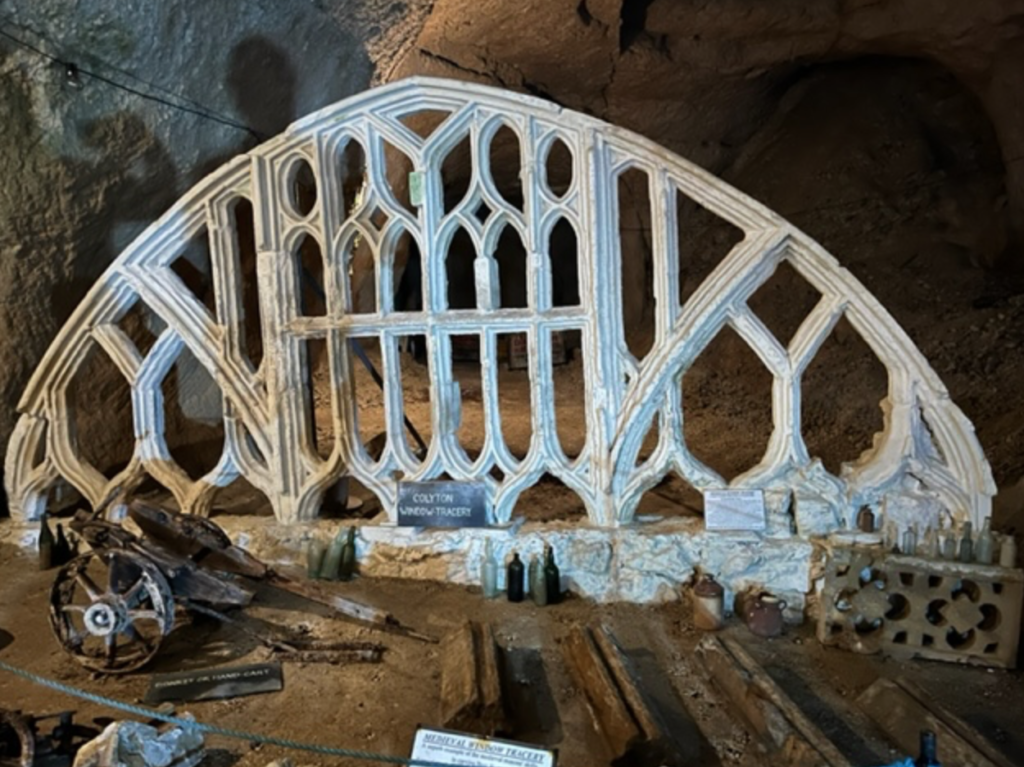
The finished blocks were hauled to surface by horse and cart to the mine entrance where they were checked for cracks and fractures. A few taps with the boss’s hammer and the rock either “rang true” (it had no cracks) or it yielded a duller clunk indicating it was flawed. Fractured blocks were discarded, and the entire day’s effort was wasted. Blocks that passed the test were dragged down the hill and loaded on to barges at the beach to be shipped to wherever it was needed. The rock was even exported to the US and an example of a carved window arch that originally adorned a church in America has been placed underground for visitors to ooh and aah over.
Liquid Apple Laxative
The workers did 12-14 hour shifts. The work was so hard, that most never survived beyond the age of 40. To stay hydrated and moderately sane the miners drank 10-12 pints of rough apple cider each per shift. Now, my own experience of drinking organic, unfiltered, yeasty apple cider at a pub in Penzance was not pleasant. It’s flat, milky-yellow in colour and tasted a bit sour. Not content with being barely drinkable it also had some really ugly gastric repercussions for me after only one pint of the bloody stuff. I barely made it back to the B&B from the pub, sauntering along with clenched cheeks praying I’d find a jiffy john along the way (I didn’t). At the BnB I had a rather long enforced sojourn in the bathroom dealing with the er… fruity fall out. So, I can only assume that the quarrymen must’ve had a bloody big shithouse somewhere down there to handle the explosive consequences of drinking that much pure apple laxative.
A community of masons also lived and worked at the quarry, custom carving items for shipment. The masons were a little full of themselves because of their carving talents, and didn’t get on with the burly quarrymen who’s job it was actually mine the stone. In fact, the trades disliked each other so much they had their own village pubs to drink in, and the Masons Arms is still pouring pints today. The term Free Mason referred to masons who were free to move from quarry to quarry, mine to mine plying their trade wherever they wanted. They had a distinctive way of writing the letter “A” – still used today in Masonic symbols – with a set square as the cross bar on the A. The mine workings are full of graffiti and it’s pretty obvious who was a mason and who wasn’t from the lettering they used.
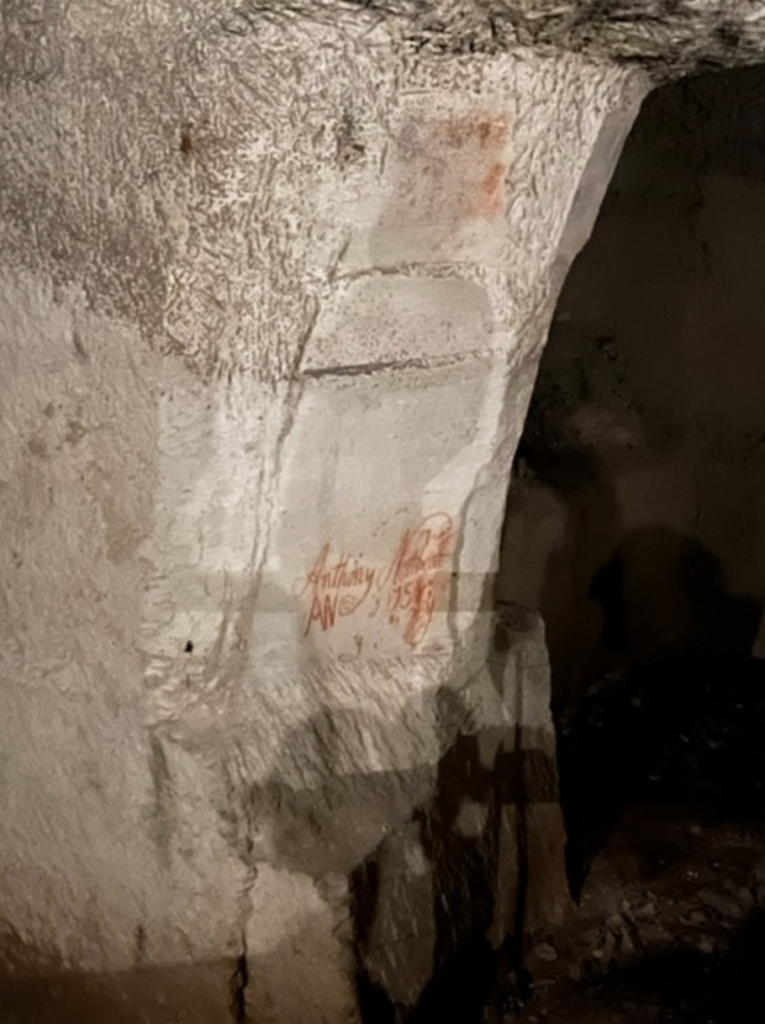
Disaster Strikes
Fairly late in its history in the 1700s, the quarry owners decided to use gun powder to speed things along. The plan was to set off a blast at surface to expose workable rock. The enthusiastic crew prepared the site -which was directly above the underground quarry- and sent an 8-year-old boy down to warn the miners that a blast was coming, but he didn’t make it down in time to spread the word.
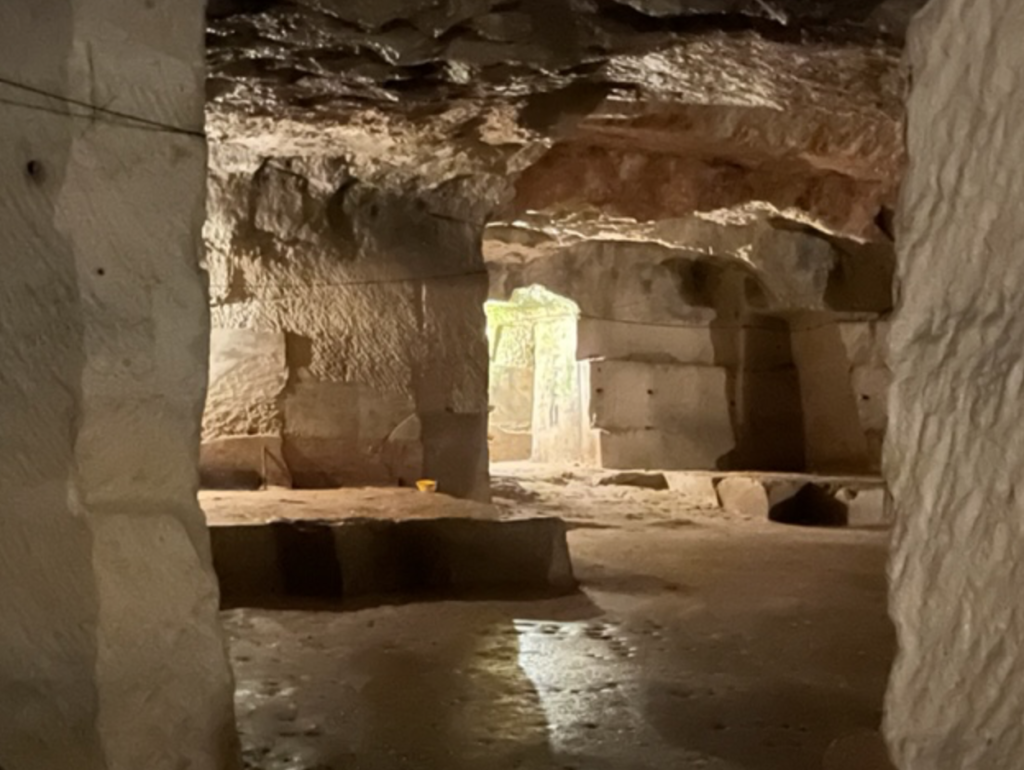
The blast was far bigger than planned – a bit too much black powder was used- and the workings collapsed onto a full crew of miners below killing 47 of them and the boy. The quarry’s biggest customer at that time was the senior clergy of the Church of England who did everything in their power to suppress news of the disaster. No effort was made to retrieve the bodies and there’s no record of the deaths in the Parish records. The Church was more concerned about the monetary loss of valuable pit horses The tour guides swear blind that from time to time they see the figure of a young boy in a jacket and cap standing by the pile of rubble that marks the edge of the collapsed workings.
That’s Yer Lot
Those are my clammy recollections of the Beer Quarry. For me, it was one of those rare jaw dropping moments when a fascinating piece of history -about which I knew absolutely bugger all- came to life in glorious, smelly detail. The fact that it was mining and rocks was the icing on the cake. So if you find yourself down that part of the world, make sure to brave the roads-of-death and take the tour. You won’t regret it. Unlike the organic cider which you definitely WILL regret if get within 10 feet of it. You have been warned.
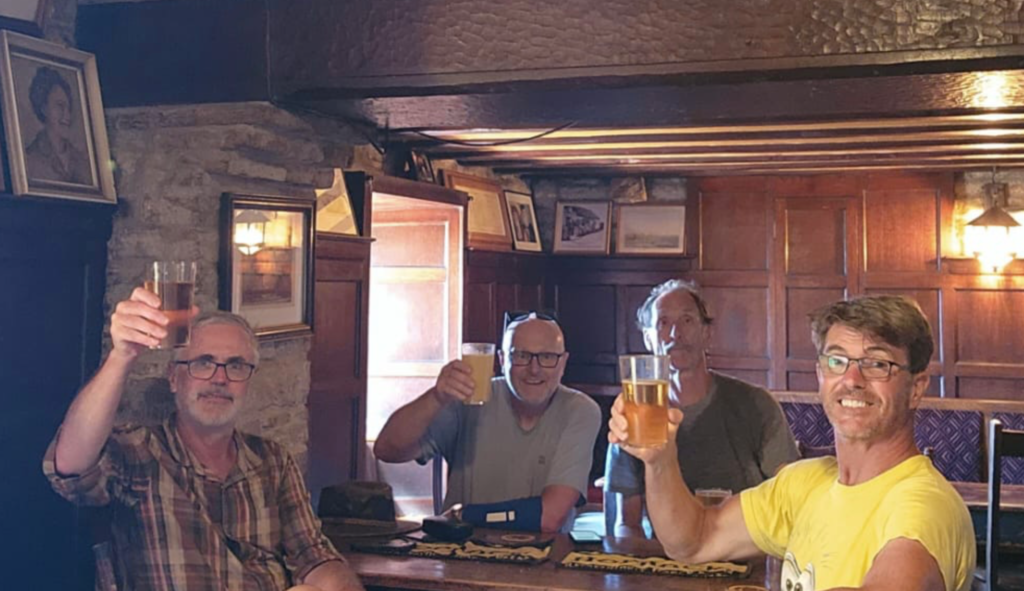
And remember…
I put a lot of effort in to researching which beverages cause gastro-intestinal problems so you don’t have to. I have suffered to make the world of beer and cider a safer place for you to drink in. The least you can do is subscribe to my laxative blog using the grubby little subscription box at the top of this page. Think of the fun you’ll have reading it while you’re sat on the loo.


Ralph mate, I hope one day you’ll put all your stories into a book.
Hard to believe you’re a geologist with your sense of humour. You’d have made a much better mining engineer.
thanks John. I’m inspired again so more geo-guff is on the way.